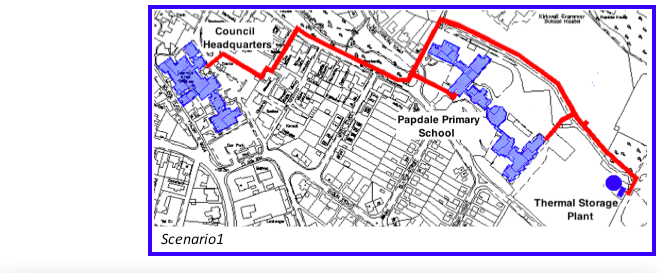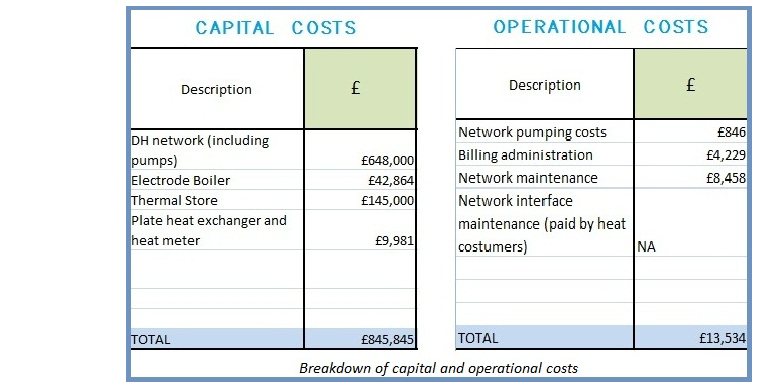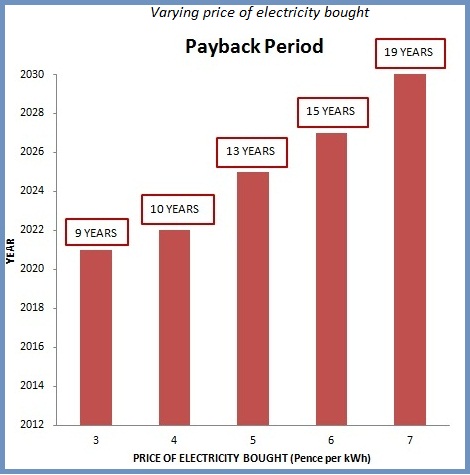
The first scenario includes the two council buildings:
- Council Headquarters
- Papdale Primary School
The key element for this scenario is the price of electricity bought. Negotiating a good price is essential for the project to be viable. By varying it, it can be observed a big variance in the resultant payback periods .

To assess the financial viability of this initial scenario a capital and operational cost were calculated
- Total Capital cost: 845,845 pounds
- Total Operational cost: 13,534 pounds
In order to obtain these values, the overall cost of the district heating network was divided into two main areas: capital and operational costs. This was achieved by creating a breakdown of each of the costs associated with both of them.
It can be observed in the following tables that the major capital cost is given by the pipe network which has a cost of around £800,000/km of piping. This includes all associated materials, permits and manpower required

On the other hand, the operational costs represent a small percentaje of the total capital cost and this is due to the long life of some of the materials used and the limited man power required to keep the district heating network operational
The different payback periods shown were obtained in the financial analysis by varying the price of electricity bought from the energy company. This is shown in the following graph. It can be observed that the payback period could vary from 9-19 years depending on the assumptions that are made. However, the payback period is mostly reliant on the price of electricity bought. If electricity could be purchased at 5 pence per kWh then the payback period would be 13 years.

The internal rate of return for this scenario after this payback period incremets as shown below. The increase in the internal rate of return is due to the assumption that the price of heating oil will increase each year much faster than that of the cost to purchase the surplus electricty.
- 2026: 1%
- 2027: 2%
- 2028: 4%
By 2025 annual savings of more than 100,000 pounds are expected. This is due to the estimated difference in price of heating oil and the price of the surplus electricity.
It is important to stress that this is reliant on the price that the council can negotiate with the energy company for the surplus electricity.